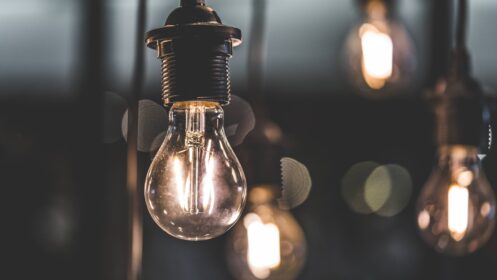Electricity indisputably plays a key role in our daily lives. Yet, many of us take for granted the technology that measures our electricity consumption: the electric meter. Understanding your electric meter is crucial not only for monitoring your energy usage but also for making informed decisions about energy efficiency and cost-saving strategies. In this guide, we’ll dive into the world of electric meters, demystifying their types, functions, and how to read them effectively.
Types of Electric Meters
There are several types of electric meters, each designed to suit different settings and purposes. The most common types use these different technologies.
Analog Meters
Traditional analog meters have been used for decades. They feature a spinning disc that reflects the amount of electricity consumed. The more electricity you use, the faster the disc spins. Reading an analog meter involves noting the position of the dials and calculating the usage.
Digital Meters
Digital meters have replaced analog meters in many places in Holly Springs, NC due to their accuracy and advanced features. They display the consumption in numerical format, making it easier to read. Some digital meters also show real-time usage data.
Smart Meters
Smart meters take energy measurement to the next level. They offer real-time data on consumption, allowing you to monitor your energy usage patterns closely. Smart meters can communicate directly with utility companies, eliminating the need for manual readings and enabling remote connections and disconnections.
How to Read Your Electric Meter
Reading your electric meter might seem daunting, but it’s relatively simple once you know how. For analog meters, start with the dial on the far right. Note the number the pointer has passed; if the pointer is between two numbers, take the lower number. Repeat the step with the next dials to the left until you have read all of them.
If the pointer is directly over a number, check the dial to its right. If that dial has passed zero, subtract 1 from the number you recorded for the previous dial. Once you’ve noted all the dial readings, you have your total electricity consumption.
As for digital meters, read the numbers from left to right, including all digits. Some meters might have multiple displays for different rates or time periods; ensure you’re reading the right display. This reading represents your total electricity consumption. Last but not least, smart meters have an easy-to-read digital display. Simply look at the screen to find your current energy usage in kilowatt-hours.
Understanding Your Usage
Understanding your energy usage patterns can empower you to make informed decisions about reducing consumption and cutting costs. Here’s how to interpret your consumption data.
Daily Usage
Keep track of your daily energy usage. Identify patterns where consumption is higher, such as during peak hours or weekends.
Seasonal Variations
Observe how your energy usage changes with the seasons. Heating and cooling systems often contribute to spikes in usage.
Appliance Insights
Some smart meters can provide data on individual appliance consumption if they’re equipped with load disaggregation technology. This can help you identify energy-hungry appliances.
Energy Efficiency Strategies
Armed with the knowledge of your energy usage, you can implement the following effective energy efficiency strategies.
Time-of-use Awareness
If your utility offers time-of-use pricing, shift energy-intensive tasks to off-peak hours when rates are lower. Wash your clothes at 8 p.m. and save money.
Appliance Upgrades
If certain appliances are consuming more energy than others, consider upgrading to more energy-efficient models. Look for an ENERGY STAR label on the most efficient ones.
Sealing and Insulation
Properly insulate your home to prevent temperature leaks, reducing the load on heating and cooling systems. Seal cracks around doors and windows and install insulation in the attic.
LED Lighting
Replace incandescent bulbs with energy-efficient LED lighting to significantly reduce electricity consumption. These bulbs also tend to last longer than the traditional incandescent ones.
Phantom Load Reduction
Unplug devices that draw power even when turned off or use smart power strips to completely cut off power. Devices include items with a display, like your microwave or a clock.
Choosing the Right Electric Meter for Your Needs
Selecting the most suitable electric meter requires careful consideration of various factors. Your choice can influence energy management, accuracy, and long-term cost savings. Here’s a concise breakdown to help you make an informed decision.
Purpose and Property Type
Property type plays a pivotal role in meter selection. For residential properties, digital or smart meters are ideal due to their real-time data tracking and accuracy. In contrast, commercial or industrial settings might require more advanced meters capable of handling higher energy loads and intricate data analysis.
Communication and Features
Communication capabilities are vital. Smart meters excel in transmitting data directly to utility companies, streamlining billing and facilitating swift responses to issues. Consider extra features like load disaggregation, which provides insights into individual appliance consumption. Though smart meters might have a higher initial cost, their long-term benefits often outweigh the investment.
Regulatory Compliance and Forward Thinking
Regulatory requirements vary by location. Ensure your chosen meter complies with local regulations. Furthermore, consider the future trajectory of the energy industry. Opting for a smart meter aligns with sustainability trends and positions you to benefit from evolving technologies. Despite potential installation complexities, these meters offer advanced solutions for accurate billing and energy management.
Maintaining and Monitoring Your Electric Meter
Understanding and selecting the right electric meter is only the beginning. To ensure accurate readings and optimal performance, regular maintenance and monitoring are essential. Here’s how you can take care of your electric meter.
Regular Inspections
Perform visual inspections of your meter regularly to ensure it’s in good condition. Check for any wear-and-tear, damages, or signs of tampering, such as a loose meter casing. If you notice any issues, contact your utility company promptly.
Keep the Area Clear
Ensure the area around the meter is free from debris, vegetation, and other obstructions. This allows easy access for readings and maintenance by utility personnel.
Avoid Interference
Refrain from interfering with the meter’s components. Tampering can lead to inaccurate readings, safety hazards, and legal repercussions.
Monitor Your Usage
Take advantage of the data provided by digital or smart meters to monitor your energy usage. By keeping an eye on your consumption trends, you can identify anomalies and adjust your habits accordingly.
Energy Efficiency Updates
Regularly implement energy-saving strategies based on the insights provided by your meter. Adjust usage patterns during peak hours, upgrade inefficient appliances, and minimize phantom loads.
Professional Maintenance
For smart meters and complex systems, professional maintenance might be necessary. Contact your utility company if you suspect any issues with your meter’s functionality.
Be Aware of Weather Conditions
Extreme weather conditions can affect meter performance. Ensure that the meter is adequately protected from the elements to prevent damage.
Learn More About Electric Meters!
Understanding your electric meter is a vital step towards managing your energy consumption, lowering your electricity bills, and contributing to a more sustainable future. Whether you have an analog meter with spinning dials or a state-of-the-art smart meter, the ability to interpret your energy usage empowers you to make conscious decisions about how you consume electricity.
We are a one-stop shop for your home’s systems. We provide installation, repair and maintenance services to meet all your heating, cooling, electrical, and plumbing needs. If you would like to know more about our services, call Thermo Direct in Raleigh today for more information!









